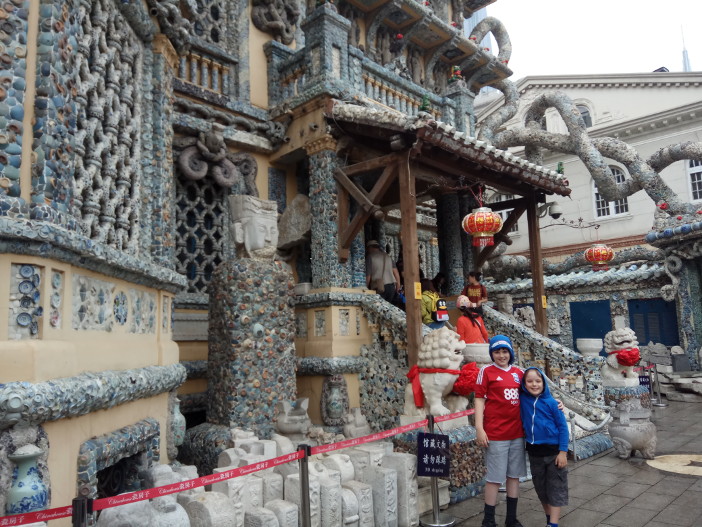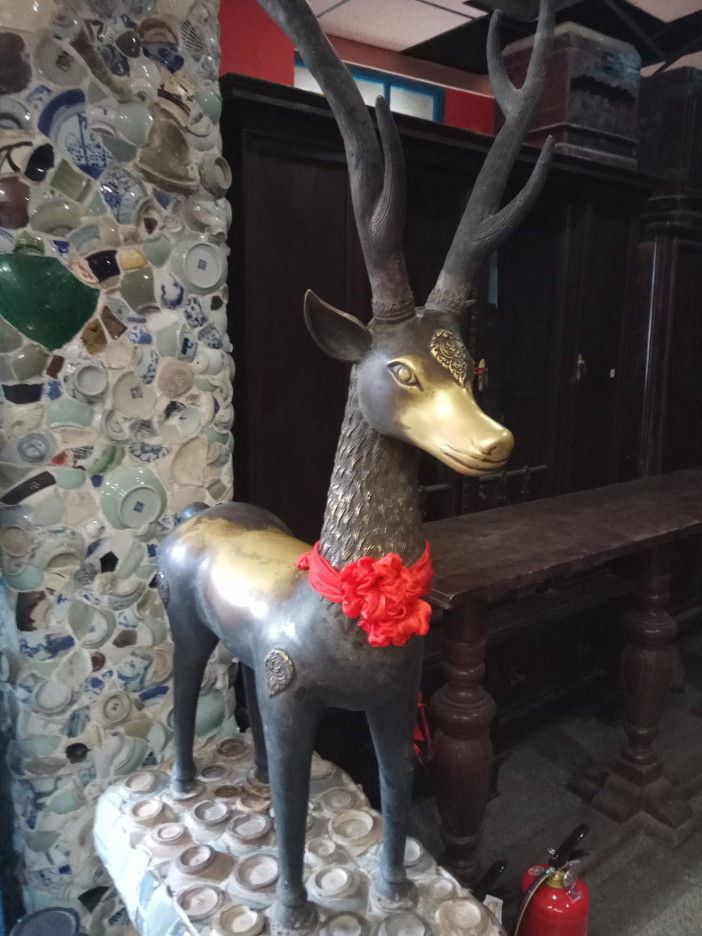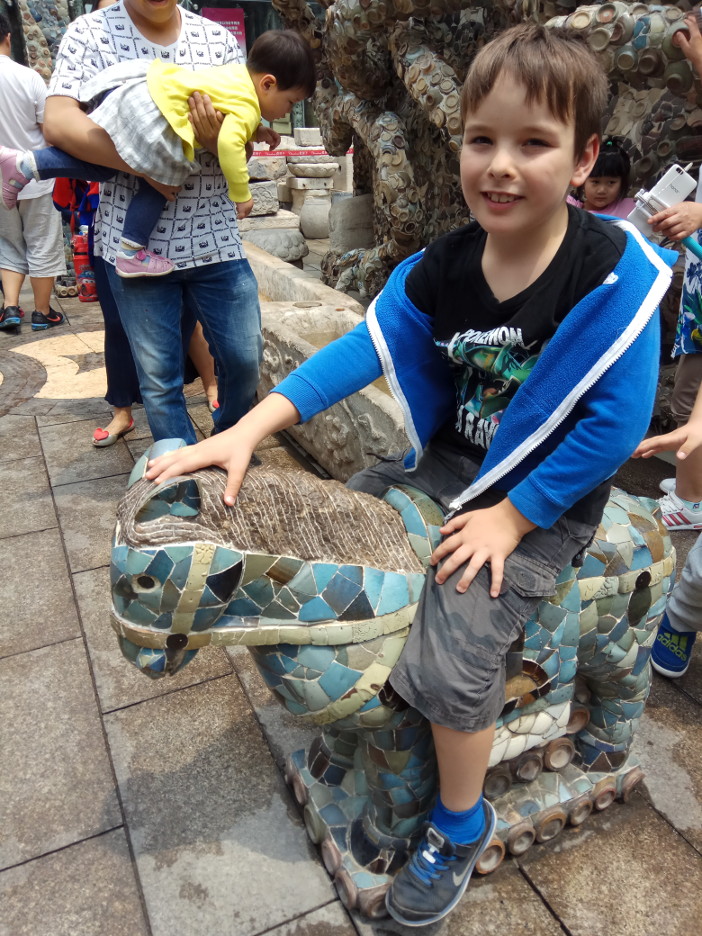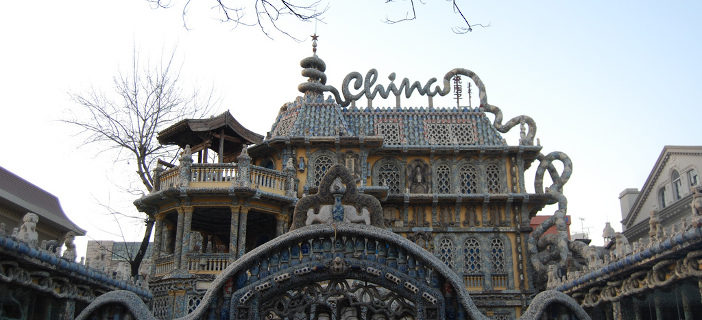We discovered Tianjin’s “Porcelain House” (also known, a little confusingly, as the “China House”) by accident. We were in a taxi heading back to our hotel when we passed it, and our attention was drawn, first by the crowds around it, then by the building itself. Not only is every inch of it covered in broken pottery, but it seems to have sprouted ceramic tentacles. It looks more like one of Gaudi’s creations in Barcelona than anything you might expect to see in China.

The original building is over a hundred years old, a French-style villa built during the “concession” era. It fell into disuse and disrepair, before being bought by porcelain collector Zhang Lianzhi, who spent the next four years decorating it with broken shards. It’s now open to the public, and to judge by the lines of people waiting to hand over their RMB 60 to see inside, Zhang’s investment has paid off.

Metal statues are shiny where they’ve been rubbed for luck
The interior is as much an oddity as the outside. The walls are decorated with mosaics and murals, there’s a stone wishing well, and a collection of antique statues and furniture assembled apparently at random. To anyone with an interest in history, the lack of information about the age or provenance of the antiques is maddening – there are a few small plaques in Chinese, but nothing in English – and some of them are in a poor state of repair. It seems pointless ordering visitors not to touch when there are obvious marks where tape has damaged the wood and marble.

The courtyard features stone carvings, including many Buddhas missing their heads or noses, or showing other signs of historical vandalism. The Buddhas are displayed with a degree of respect, but most of the stones are simply assembled haphazardly like the furniture. Here though there is a more relaxed attitude to visitors touching the displays.

The porcelain house is both fascinating and frustrating, as Chinese tourist attractions often are. However if you visit Tianjin it’s a sight you shouldn’t miss.
Photos: Wikimedia Commons, Andrew Killeen


